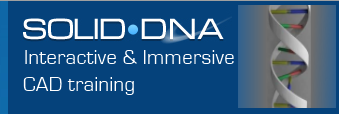SEwST 2 keynote – sketch
Did not had much time to post while at the user conference so after driving 20 hrs back home and a good weekend of sleep. I have some free time to post more details. Watch for new articles in the next couple of days
I would like to thank you the Solid Edge team to allow me take screen shoot while exploring the new release.
Note:
ST2 is still in beta testing
- It is possible that some screen shoots in the following articles does not reflect the exact final product.
- Unless some of the beta test going on reveal major non compliance for the release candidate version, information’s provide are has accurate has i can understand them.
Day two i got the chance to get my hand on the product and play around.
Here a more detail follow up on the keynote previously post…
In the last post I mention ST1 was more a technology preview version compare to ST2. Some competitors would jump on that statement. The same way they have jump on ST1 because they have been taken by surprise.
Well i have bad news for those who didn’t take Siemens seriously, even without touching all aspect of the design, ST1 was a pretty robust solution .
Here one comment see For ST1 when ask
“Is it better/faster/funner – or just ‘different’ ??? ”
Yes to all of the above.
Better in many respects, but not all. Making edits in many cases are much easier/faster and thus better. There is still a place for History/Profile based has features though(DNA: ST2 start implement those under the helix command has an example). Examples being surface modeling where manipulation of the driving curves is required or where a rollback to a previous model state maybe advantageous.Faster – Making edits to imported models is without question faster and easier. All models recompute faster. ST files are smaller, so they save faster, open faster and consume fewer system resources. Large assemblies perform better on the same system. Two of the designs I did used extensively Pro/E and Works files that needed to be changed for the new design. If I didn’t have ST, I would have most likely created everything from scratch. That is a big time saver. Being able to make a change from the top level assembly without having to go into the model is faster. Being able to change several parts at once from the top level assembly without having previously planned for the change and built links between the parts is faster.
Funner – Yes it is. Learning and developing workflows for ST is, for me, fun and challenging. For the work that I do (and it does get fairly complex) the transition to ST was quite smooth. All of the new projects I have started since last August have been done using ST models and workflows. I did not regret taking the ST approach on any of them. Even after nine months of heavy daily use, I’m still learning or discovering new things.
Different – Without a doubt ST requires a different way of thinking. Some of the hard and fast rules we have lived by for the last many years no longer apply or are turned around 180 degrees. Neither of which is necessarily a negative. When a change to a model is identified, you truly can “grab and go” to make the change. Of course that does not apply in every situation.
So let’s start my ST2 review with a popular demand. Skeleton modeling approach was a popular way of doing things in traditional modeling, and it may be one of the hardest habit to break
Merge sketch
When sketching, in ST1, by default coplanar sketches where merge together.
In ST2 same behavior is the default, except that user can per sketch uncheck the merge sketch option from the RMB menu of the specify sketch entry.
Any other entities will be coplanar but in a different sketch collection.
If two sketch are merge, i was able to uncheck the option and use the move sketch to make two separate entry in the pathfinder.
Interface
Here we found a lot of small details that help return more feedback to the user. Those will be more obvious for who have work with ST 1.
A new set of icon i also implement thru out the software to enhance the user feedback. Including some color scheme in the Live Rules panel.
Steering wheel
With the Synchronization of the sheet metal, steering wheel receive a new design.
The classic shape of ST1 (Notice the secondary axis is now longer then the principal one), and the new Clock one for element that require planar move ( 2D)
Select Tool
Selection group layout change and a new fence selection option is available to allow selecting overlapping element.
Next post will be on the simulation environment
No comments yet.






Leave a comment